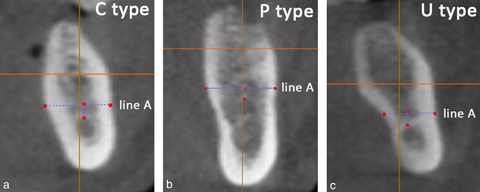Evaluation of the stress distribution in the cortical bone caused by variations in implant applications in patients with bruxism: A three-dimensional finite element analysis
Abstract
Aim: To evaluate the stress distribution in the cortical bone under parafunctional forces with different occlusal thicknesses, monolithic zirconia with different implant diameters, and number variations in implant-supported fixed prosthetic restorations applied in patients with bruxism.
Methodology: The tomographic sections of the previously registered mandible were used to model the mandible. Modeled bone height is 30 mm, cortical bone thickness is 1.5 mm, and trabecular bone thickness is modeled as 13 mm. By placing two implants in the created bone model, a three-member main model (Group 1), the number of implants was increased, three implants supported the Group 2 models, the diameter of the implants was increased, and the Group 3 models were created. The created Group 1, 2, 3 models, the occlusal thickness was divided into subgroups with 1.0, 1.5, and 2.0 mm, respectively (Groups A, B, and C). The groups were applied in two directions: vertical and 30o oblique. Stress values under forces were analyzed by finite element stress analysis.
Results: Under vertical loading, the maximum principal stress value in the cortical bone was found to be lowest in Group 2C, and the highest maximum principal stress value was found in Group 1A. The minimum principal stress value in the cortical bone was found to be the lowest in Group 3C, and the highest minimum principal stress value was found in Group 1A. Under oblique loading, the maximum principal stress value in the cortical bone was found to be the lowest in Group 3C and the highest maximum principal stress value was found in Group 1A. The minimum principal stress value in the cortical bone was found to be lowest in Group 3C, and the highest minimum principal stress value was found in Group1A.
Conclusion: Stresses caused by oblique forces are more than vertical forces. Increasing the occlusal thickness of the implant fixed prosthesis material, implant diameter, and number reduce the minimum and maximum principal stress values in the cortical
How to cite this article: Kantaci Y, Ülkü SZ. Evaluation of the stress distribution in the cortical bone caused by variations in implant applications in patients with bruxism: A three-dimensional finite element analysis. Int Dent Res 2021;11(Suppl.1):194-200. https://doi.org/10.5577/intdentres.2021.vol11.suppl1.27
Linguistic Revision: The English in this manuscript has been checked by at least two professional editors, both native speakers of English.
Full text article
Authors
This is an Open Access article distributed under the terms of the Creative Commons Attribution 4.0 International License (CC BY 4.0), which permits unrestricted use, distribution, and reproduction in any medium, provided the original work is properly cited.


